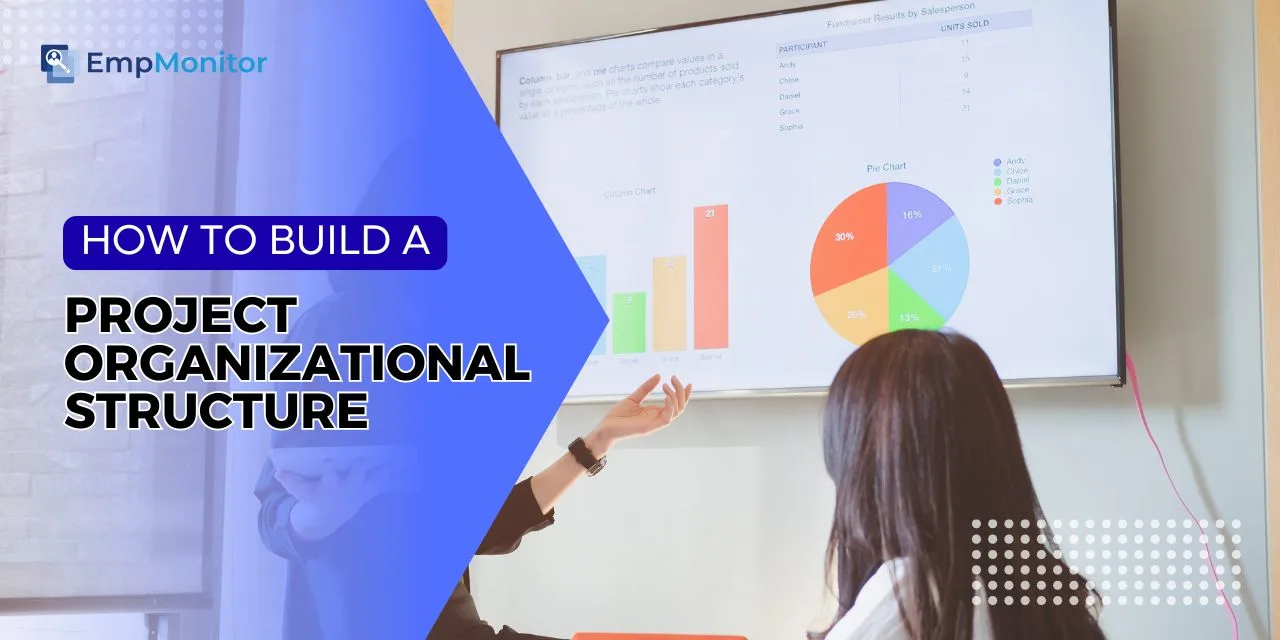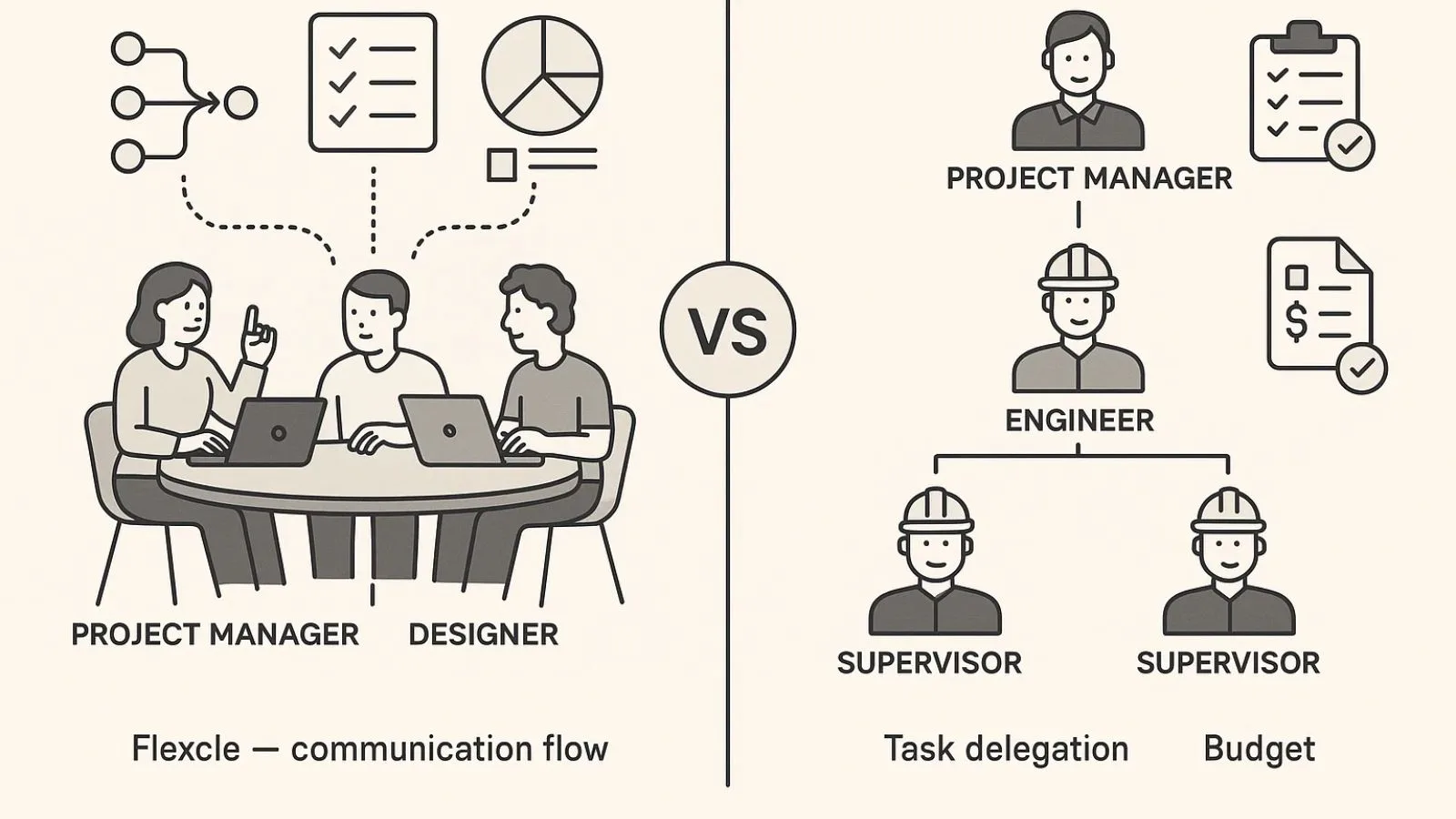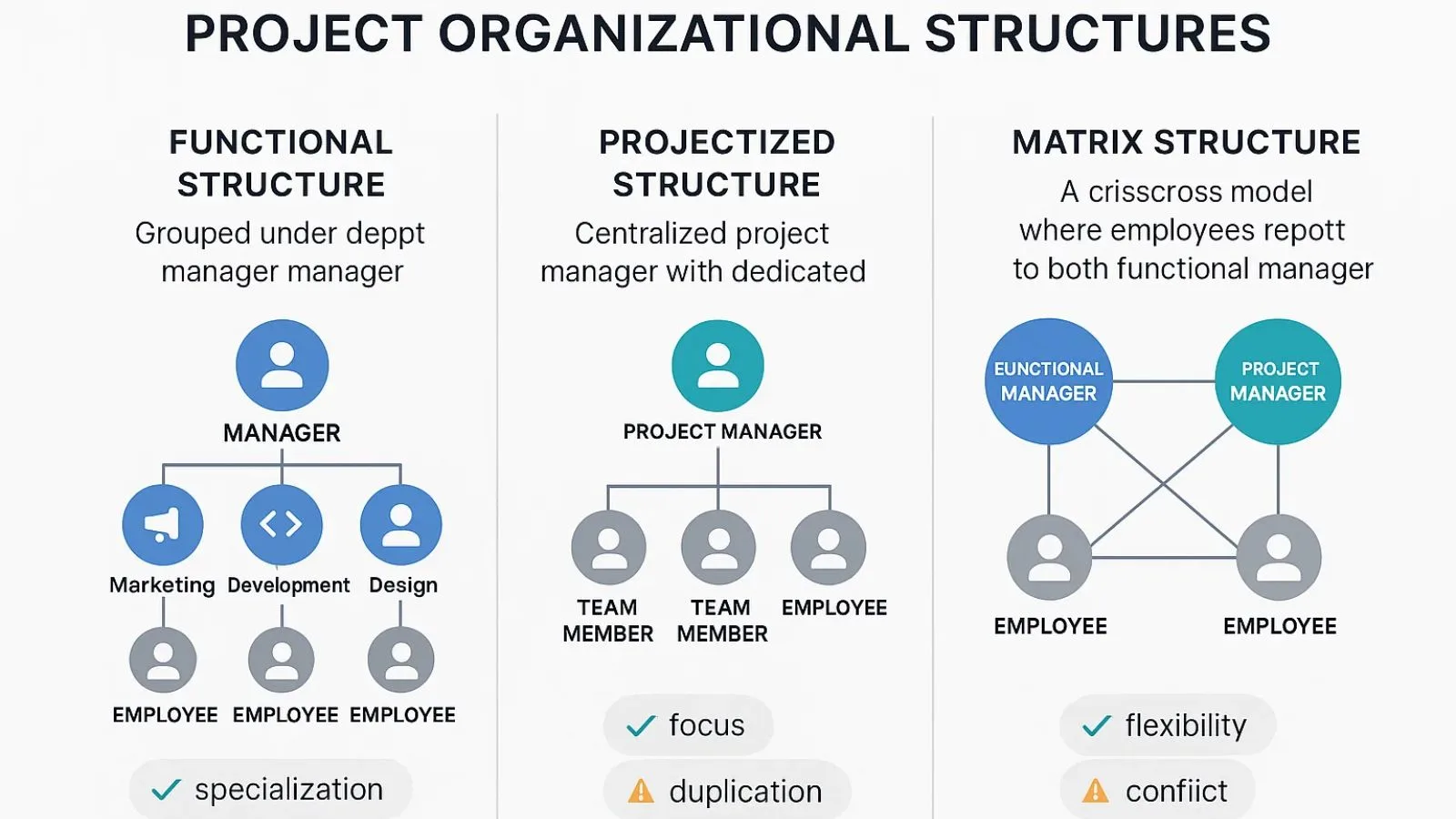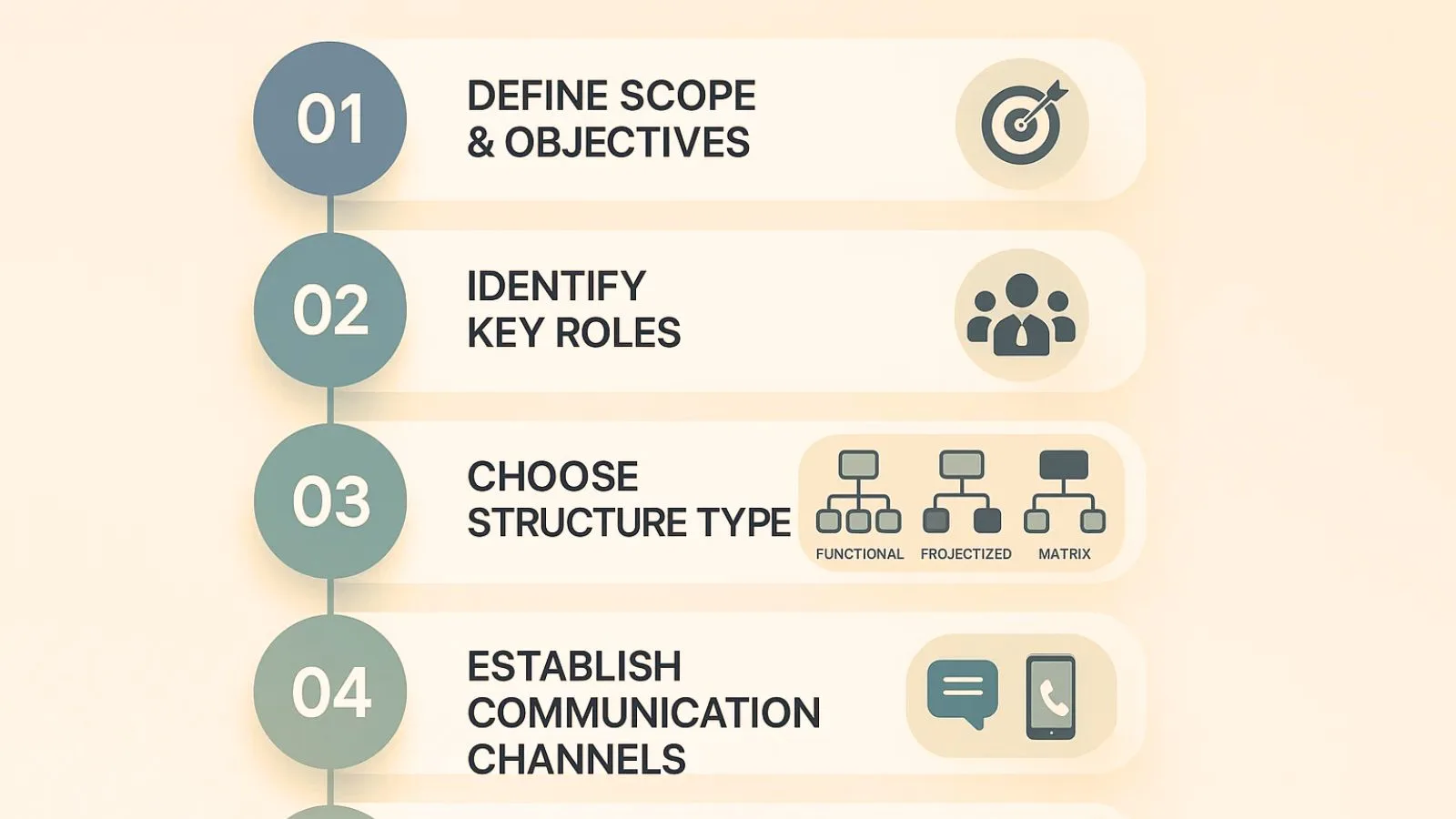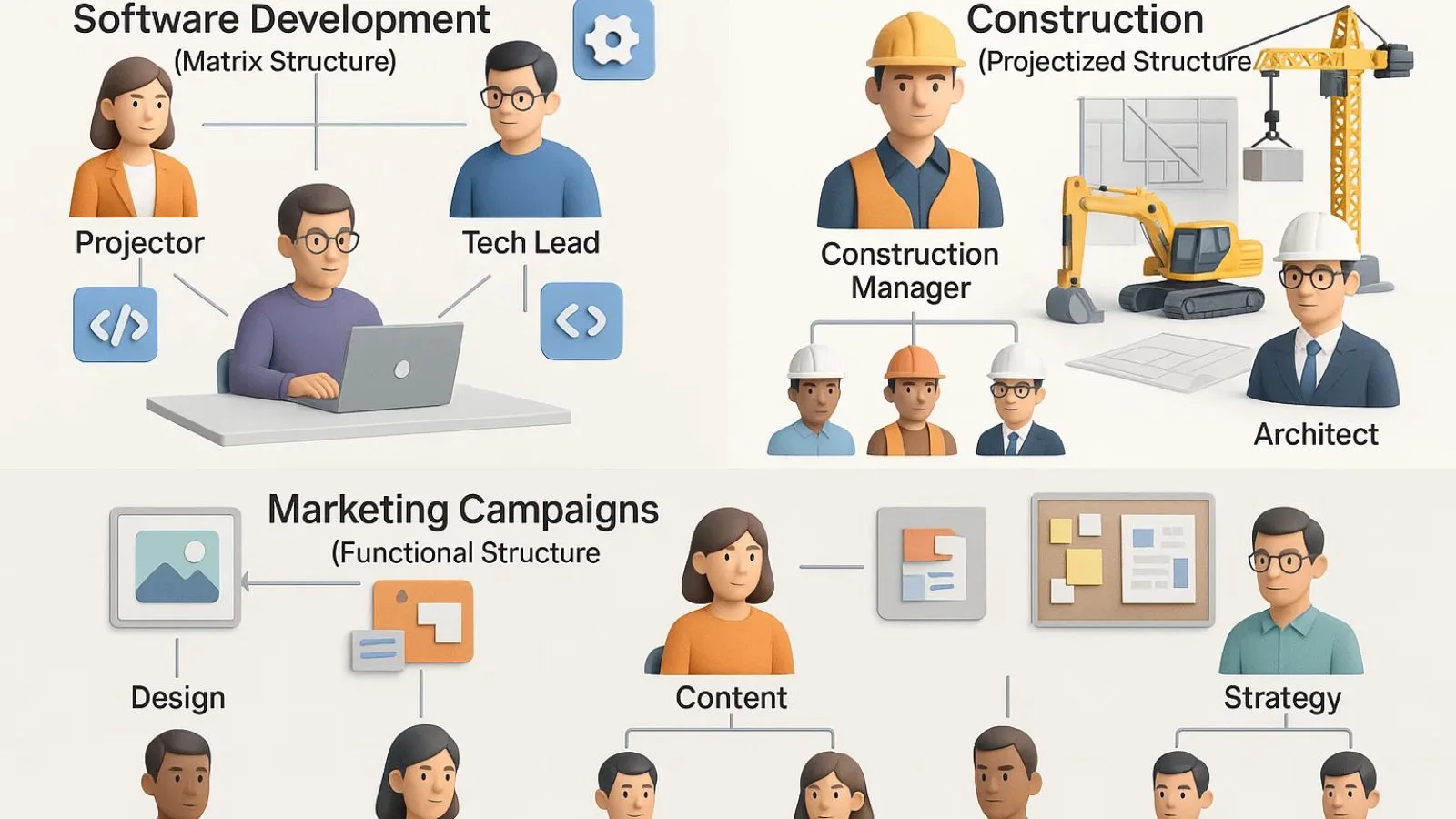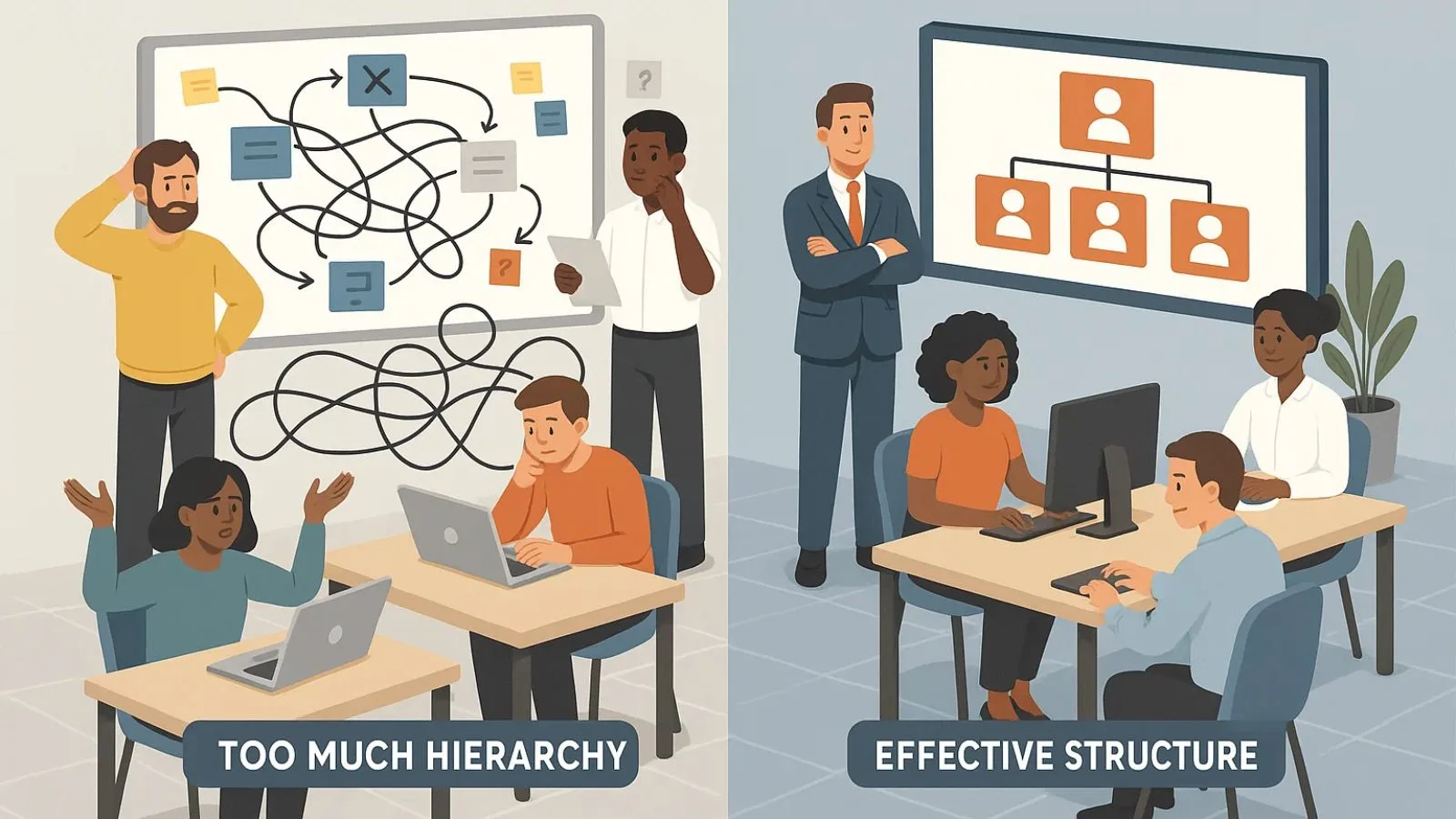Ever felt like your team is working hard but still not getting things done efficiently? That’s often a sign of a missing or broken project organizational structure. Without a clear structure, even the most talented teams can fall into confusion, tasks overlap, decisions stall, and productivity suffers.
So, what is an organizational structure anyway? Think of it as a blueprint that lays out who’s doing what, who reports to whom, and how work flows within a project. When done well, it clears up confusion and helps everyone work toward the same goal.
In this blog, you’ll discover exactly how to build a Project organizational structure that’s practical, flexible, and designed for real-world teams. We’ll walk through the types of structures you can choose from, the steps to build your own, and the tools to help make the process easier. Whether you’re leading a small creative team or managing a cross-functional enterprise project, this guide is your roadmap to smoother execution.
You Can Also Listen To Our Podcast Here,
What Is a Project Organizational Structure?
A project organizational structure is the framework that defines how people, roles, and responsibilities are arranged within a specific project. It sets the rules for communication, authority, accountability, and workflow. In simple terms, it tells everyone where they fit in the project and what they’re expected to do.
This structure is different from your company’s overall org chart. It’s designed to serve the unique goals, timeline, and scope of a project. For instance, a tech startup launching an app may have a flexible, team-based structure, while a construction firm working on a bridge may use a rigid, hierarchical model.
Why is a strong project organizational structure important? Because it clears things up, gets everyone on the same page, and helps work get done smoothly. It helps prevent duplication of work, clarifies reporting relationships, and improves communication across teams.
So instead of guessing who should review a task, who approves the budget, or who’s managing resources, the structure makes everything crystal clear.
Also Read,
How To Improve The Operational Efficiency Of An Organization In 2025?
Types of Project Organizational Structures
Not all projects work the same way, and that’s why different types of project organizational structures exist. The key is choosing the right model based on your team size, industry, goals, and the complexity of the project. Here are the main types you’ll come across:
1. Functional Structure
In this model, team members are grouped based on their specialties, like marketing, design, or development. Each department handles its piece of the project.
- Pros: Efficient use of skills and resources.
- Cons: Limited cross-team communication, slow decision-making.
This is ideal for companies where departments already have strong leadership and work independently.
2. Projectized Structure
Here, the project manager has full authority over the team and resources. Team members are often pulled together for a specific project and report directly to the project manager.
- Pros: Clear lines of authority, fast decisions.
- Cons: Can be costly, since staff might not have long-term roles post-project.
This is great for short-term, high-focus projects where quick execution is key.
3. Matrix Structure (Balanced, Strong, or Weak)
A hybrid of the above two. In a matrix setup, employees work under both a department head and a project lead at the same time.
- Pros: Flexible resource use, better communication across departments.
- Cons: Dual reporting lines can be confusing if not managed well.
This is useful when your team needs both functional depth and project focus.
Each of these project organizational structure types has its place, but the best one for you depends on how your team works and what your project demands.
How to Build a Project Organizational Structure That Works?
Now that you know the types, it’s time to build your project organizational structure. No need to stress, it’s simpler than it seems. It’s really about creating clarity: who’s in charge of what, and how tasks flow through the team.
Step 1: Define the Scope and Objectives
Before assigning roles, you need to know what success looks like. Are you building a new product, launching a campaign, or managing a construction project?
Understanding your project’s size and goals will influence how complex your project organizational structure should be.
Step 2: Identify Key Roles
List the core team members you’ll need, such as:
- Project Manager
- Functional Leads (Marketing, Development, Operations, etc.)
- Stakeholder
- Support Staff
Depending on your project, this can be a lean or large group. The important part is assigning clear responsibilities.
Step 3: Choose Your Structure Type
Refer to the earlier section and match your project needs with the right type of Project organizational structure:
- For efficiency and deep expertise, go with a functional structure.
- For speed and control, choose a projectized structure.
- For balance and collaboration, use a matrix structure.
Once chosen, sketch it out using a visual build organizational chart tool like Lucidchart, Canva, or EmpMonitor (more on this later) can help you build it quickly.
Step 4: Establish Communication Channel
Even the best project management organizational structure can break down if people don’t talk to each other. Decide:
- How often will teams check in?
- What platforms will they use? (Slack, Zoom, Teams?)
- Who escalates issues and to whom?
Mapping this early prevents confusion and delays later.
Step 5: Choose the Right Tools for the Job
Finally, tie your structure together with the right tech. Reliable project management tools help you stay organized, assign responsibilities, meet deadlines, and keep everyone in the loop.
And this is exactly where EmpMonitor can make a difference.
Also Read,
Ultimate Guide To Enhance Organizational Performance In 2025
Bring Your Project Organizational Structure To Life with EmpMonitor
Designing the perfect project organizational structure is one thing; keeping it running smoothly is another. That’s where EmpMonitor comes in.
EmpMonitor isn’t just another time-tracking or monitoring tool. It’s a full-scale project management software that helps you:
Track Productivity in Real Time
Get a clear picture of who is working on what, when, and how efficiently—without the need for constant micromanagement. EmpMonitor provides real-time productivity insights, showing you task progress, active hours, and performance trends. This helps managers make informed decisions, support team members where needed, and ensure that everyone stays focused on the right priorities.
Visualize Workflows with Ease
Its project management features make it easy to manage workflows efficiently by allocating tasks more smartly. With the Kanban board, you can organize to-do lists, track ongoing tasks and projects, and clearly mark completed ones. This ensures tasks are evenly distributed across the team, preventing staff from being overburdened while keeping progress transparent and manageable.
Enhance Accountability & Role Clarity
EmpMonitor brings accountability and clarity to your team by making sure everyone sticks to their defined roles. It helps you quickly identify bottlenecks, spot when someone is overloaded with work, or notice if a team member isn’t being fully utilized, so tasks stay balanced and productivity remains high.
Secure and Scalable
Whether you’re managing a small team of 10 or an enterprise of 1,000, EmpMonitor scales effortlessly to match your growth. Along with flexibility, it ensures enterprise-grade security to keep your sensitive data safe at every stage. You get the confidence of a platform that grows with your team while maintaining the highest standards of protection.
Perfect for Remote and Hybrid Teams
With support for multiple devices and locations, your structure stays solid even when your team is scattered.
If you’re serious about making your project management department structure truly effective, EmpMonitor is the ultimate partner to bring that blueprint to life.
Try EmpMonitor today and build a smarter, more accountable team structure.
Real-World Examples of Project Organizational Structures
To make this more practical, let’s look at how different industries apply Project organizational structure:
1. Software Development (Matrix Structure)
In most tech companies, developers might report to both a tech lead (for coding standards) and a project manager (for delivery timelines). This dual reporting allows technical skill development and fast execution, but requires strong communication to avoid overload or conflict.
2. Construction (Projectized Structure)
Construction firms often follow a fully projectized approach. A construction manager has direct authority, and team members like architects, engineers, and labor managers are all aligned under the project’s lifecycle. Once the project ends, the team is reassigned.
3. Marketing Campaigns (Functional Structure)
Marketing agencies or departments often follow a functional structure, where designers, content creators, and strategists work under their department heads. They collaborate on campaigns, but still report to their functional leads.
These examples show how structure isn’t a one-size-fits-all deal; it must fit your team’s DNA and project needs.
Common Mistakes to Avoid When Building a Project Organizational Structure
While designing a structure might seem simple, there are some traps many project managers fall into:
Ignoring Team Feedback
When you build a structure without considering team dynamics or getting input from department heads, it often creates silos and frustration.
Overcomplicating the Hierarchy
You don’t need ten layers of management. If your team is small or the project is straightforward, simplicity wins. Too much hierarchy leads to communication gaps and delays.
Unclear Roles & Overlapping Responsibilities
If two people are doing the same task, or nobody knows who’s responsible for a deliverable, that’s a failure of structure. Make sure every role has clarity.
Lack of Flexibility
Projects evolve. Structures should, too. If your team grows or the project pivots, adapt the structure accordingly. Don’t stick rigidly to a system that no longer serves you.
Tips to Make Your Structure More Effective
Here are a few practical ways to make your structure not only work but thrive:
- Use visual org charts to reduce ambiguity.
- Assign backup roles for key positions to prevent workflow blockages.
- Revisit the structure monthly to identify what’s working and what’s not.
- Celebrate structure-driven wins, acknowledge when improved organization helps you meet a milestone.
How To Communicate The Structure To Your Team?
Even the best-designed structure fails if your team isn’t aware of it or doesn’t understand it. So, once your project organizational structure is ready:
- Host a kick-off meeting to explain roles, reporting lines, and tools.
- Create a simple PDF org chart or infographic that everyone can refer to.
- Provide ongoing support. Encourage questions and feedback during the early stages of implementation.
This builds buy-in and ensures everyone is aligned from day one.
How To Build an Organizational Chart For Project Teams?
Creating a visual representation of your project organizational structure helps everyone on the team see who’s in charge of what. This isn’t just about lines and boxes; it’s about making communication easier, faster, and less prone to confusion.
Step 1: Define Key Roles and Responsibilities
Start by listing all the roles needed for the project. Think about leadership (project manager, team leads), core contributors (developers, designers, marketers), and support (QA, admin, HR if needed).
Each role should include:
- Core responsibilities
- Who they report to
- Who they collaborate with
Step 2: Choose the Right Chart Format
You don’t have to stick to traditional top-down charts. Depending on your project management organizational structure, try formats like:
- Hierarchical Chart: Best for functional or projectized teams
- Matrix Chart: For teams with dual reporting relationships
- Flat Chart: Ideal for small or agile project teams
Visual tools like Lucidchart, Canva, or even Google Slides can help you drag-and-drop roles into place.
Step 3: Share It Across the Team
Once your organizational chart is ready, don’t just save it in a folder. Make it visible:
- Pin it in your project management software
- Print and post it in a shared space
Include it in the onboarding docs for new team members
A visible chart reduces repeated questions like “Who’s handling this?” or “Who do I report to?”
Step 4: Update It as the Project Evolves
Your project management department structure won’t stay static. As tasks change or roles shift, your chart should evolve too. Make it a habit to revise the chart during weekly or biweekly reviews.
Conclusion
No matter how ambitious your goals are, projects succeed or fail based on one thing: structure. When your project organizational structure is well-defined, everyone knows their role, communication flows clearly, and responsibilities are never in question.
From choosing the right type of structure to building an organizational chart, it all comes down to aligning your team with your project’s unique needs. You don’t need to start from scratch, but you do need to be thoughtful and purposeful.
And remember, your structure shouldn’t be rigid. It should evolve with the project lifecycle, team size, tools used, and shifting business goals. The stronger your foundation, the better your team can focus on what they do best: delivering results
Frequently Asked Questions (FAQs)
1. What is a project organizational structure?
A project organizational structure is the framework that defines roles, responsibilities, and workflows within a project. It determines how tasks are assigned, who reports to whom, and how information moves across the team.
2. Which is the best project structure for agile teams?
Agile teams usually perform best in a matrix or flat organizational structure, where communication is fast and teams have the flexibility to adapt quickly. It allows cross-functional collaboration and iterative work cycles.
3. Why is building an organizational chart important?
Creating an organizational chart provides a clear visual of team structure, making it easier to communicate roles, spot bottlenecks, and streamline reporting. It helps in aligning team members with project objectives and boosts transparency.
4. Can project organizational structures change mid-project?
Yes, and in many cases, they should. As the scope or scale of a project shifts, restructuring roles or adjusting reporting lines keeps your workflow efficient and aligned with changing goals.
5. How does EmpMonitor support structured project management?
EmpMonitor provides real-time insights into how your team works, tracks productivity, and helps manage accountability, all aligned with your project organizational structure. It makes managing teams easier, especially for complex or remote projects.

